

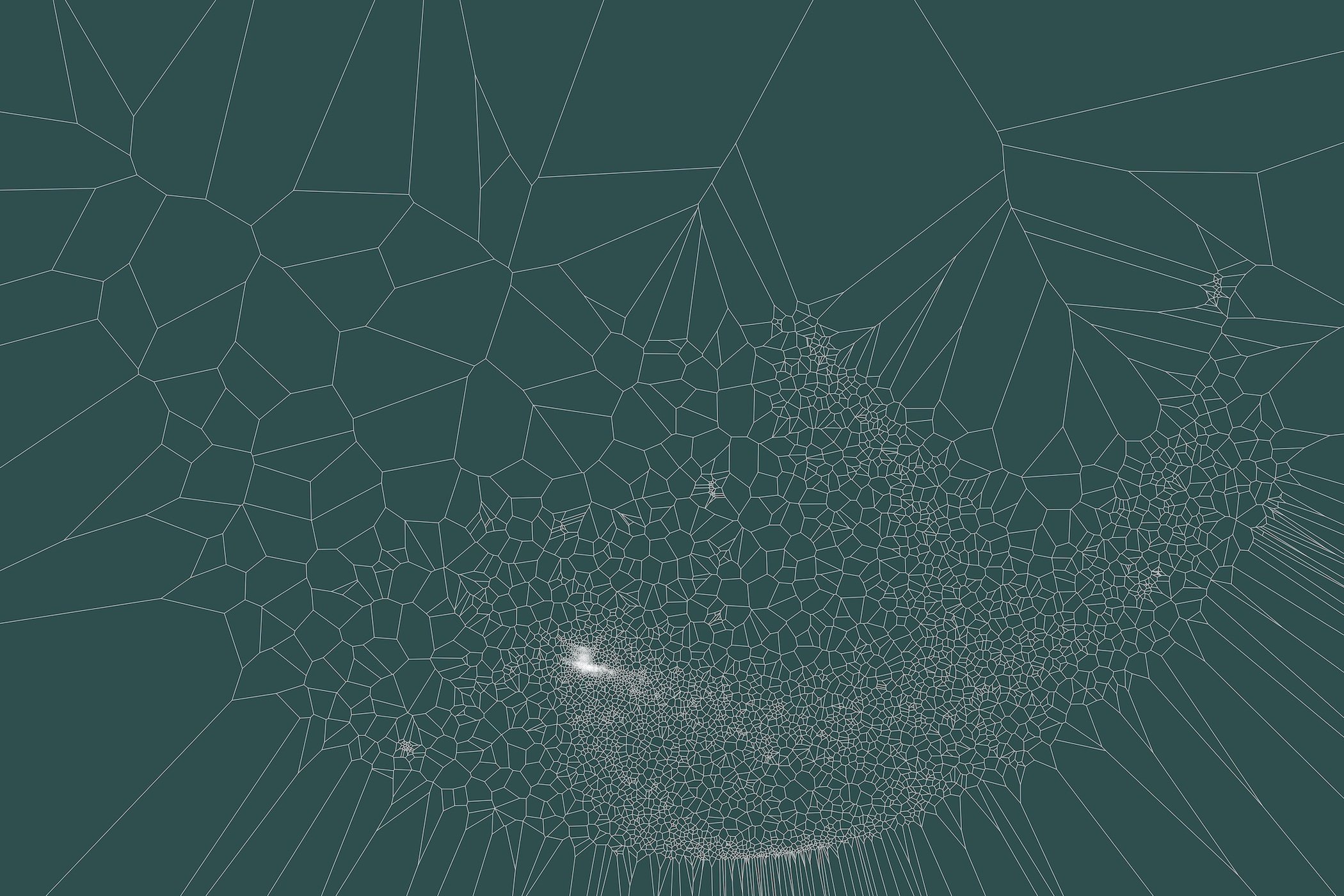







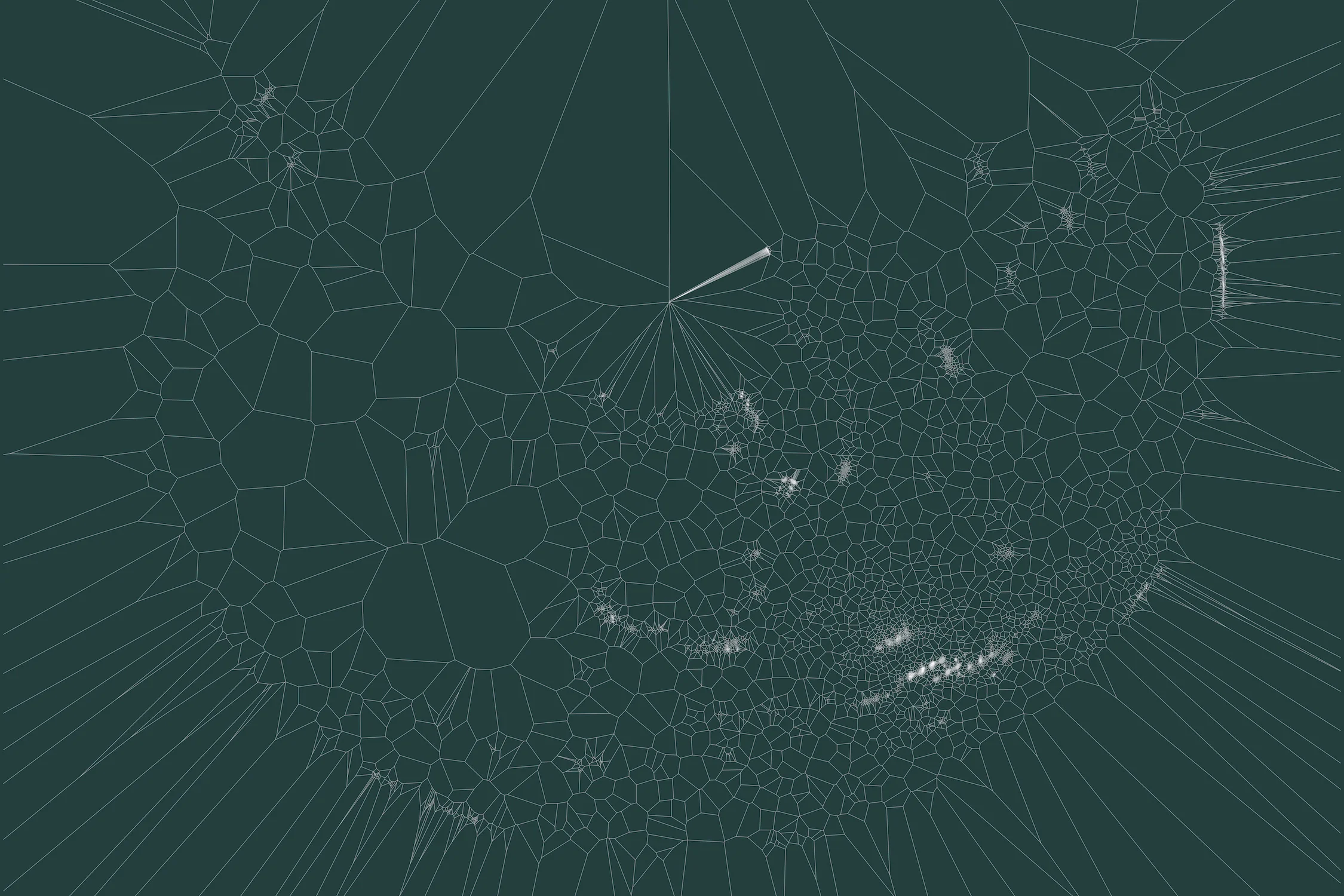


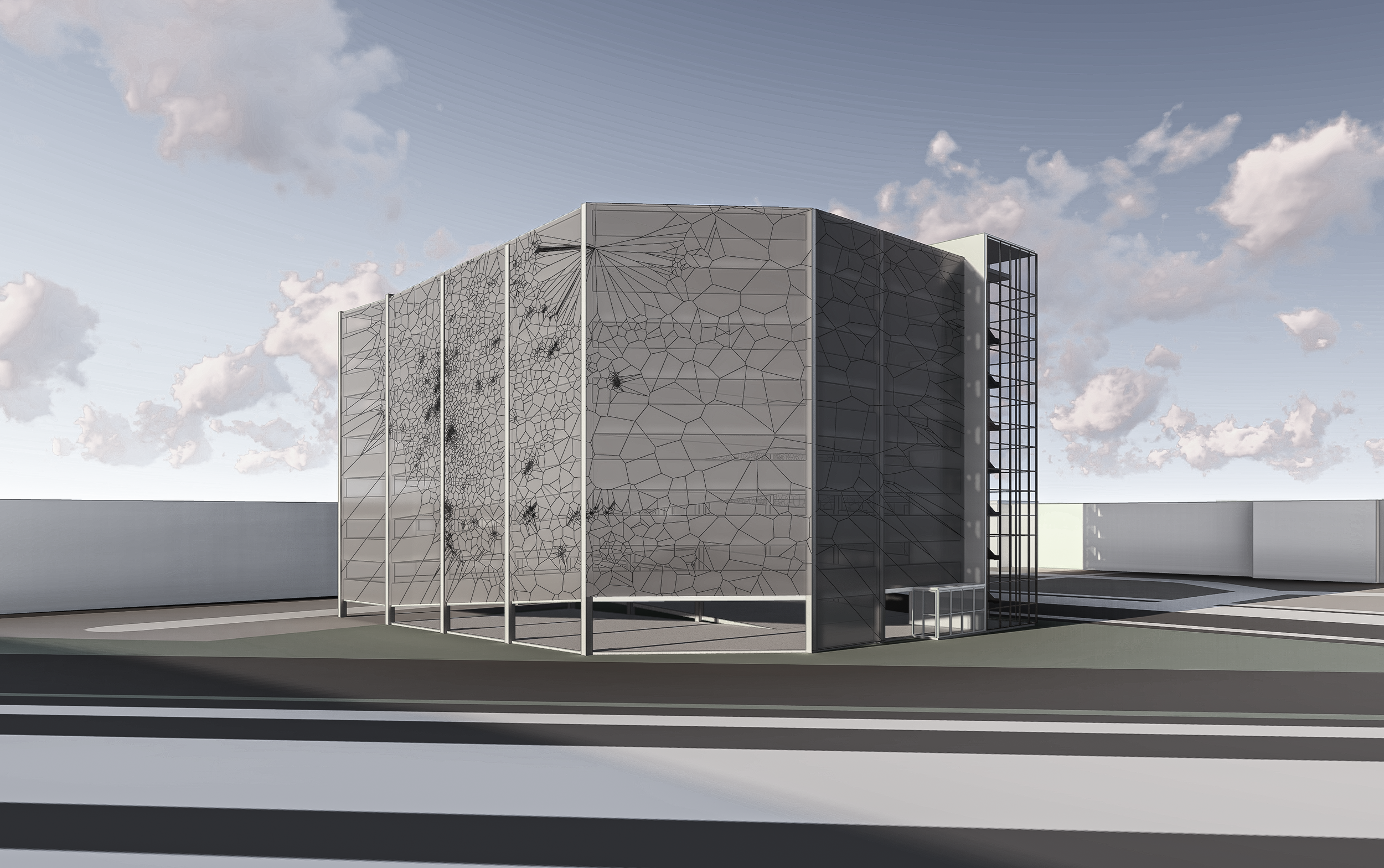


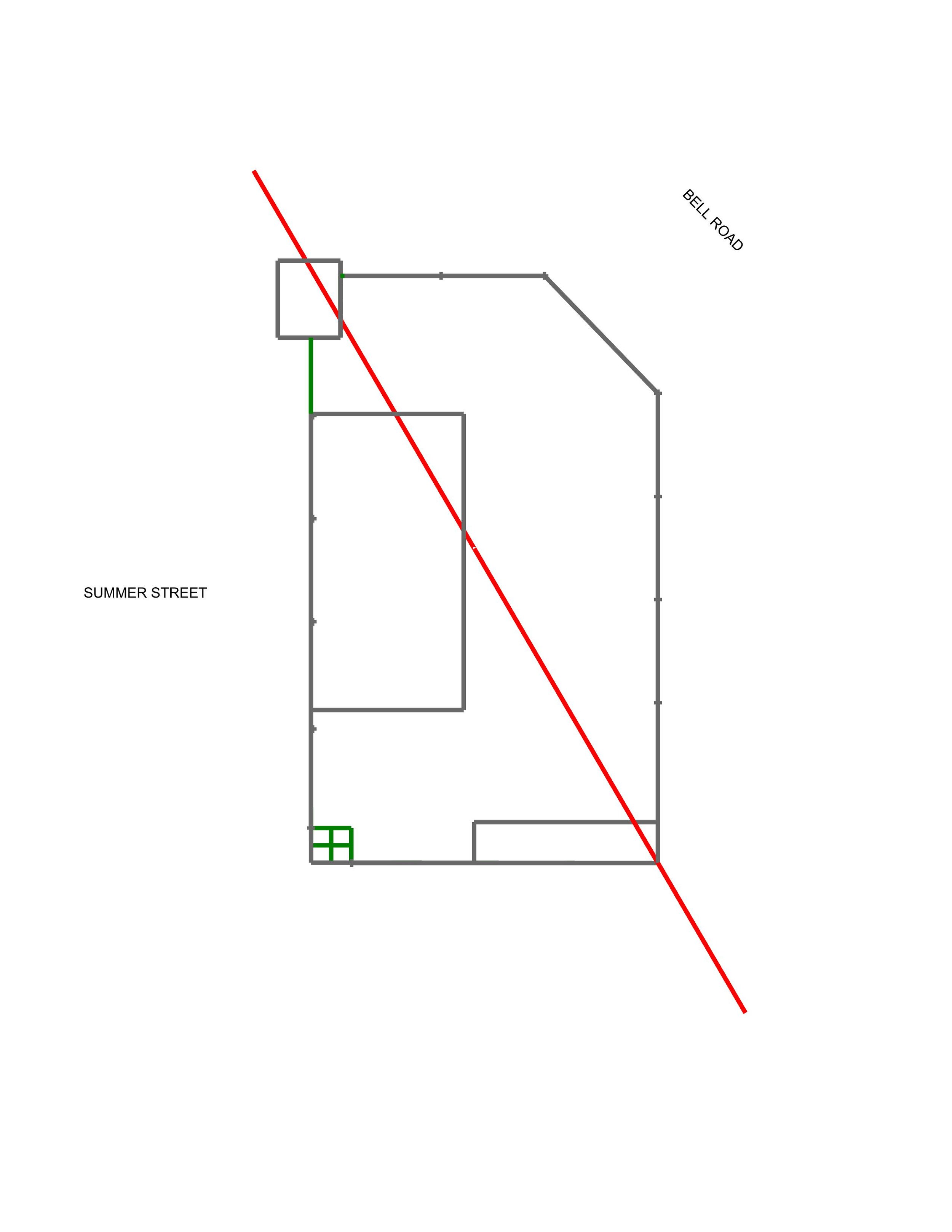
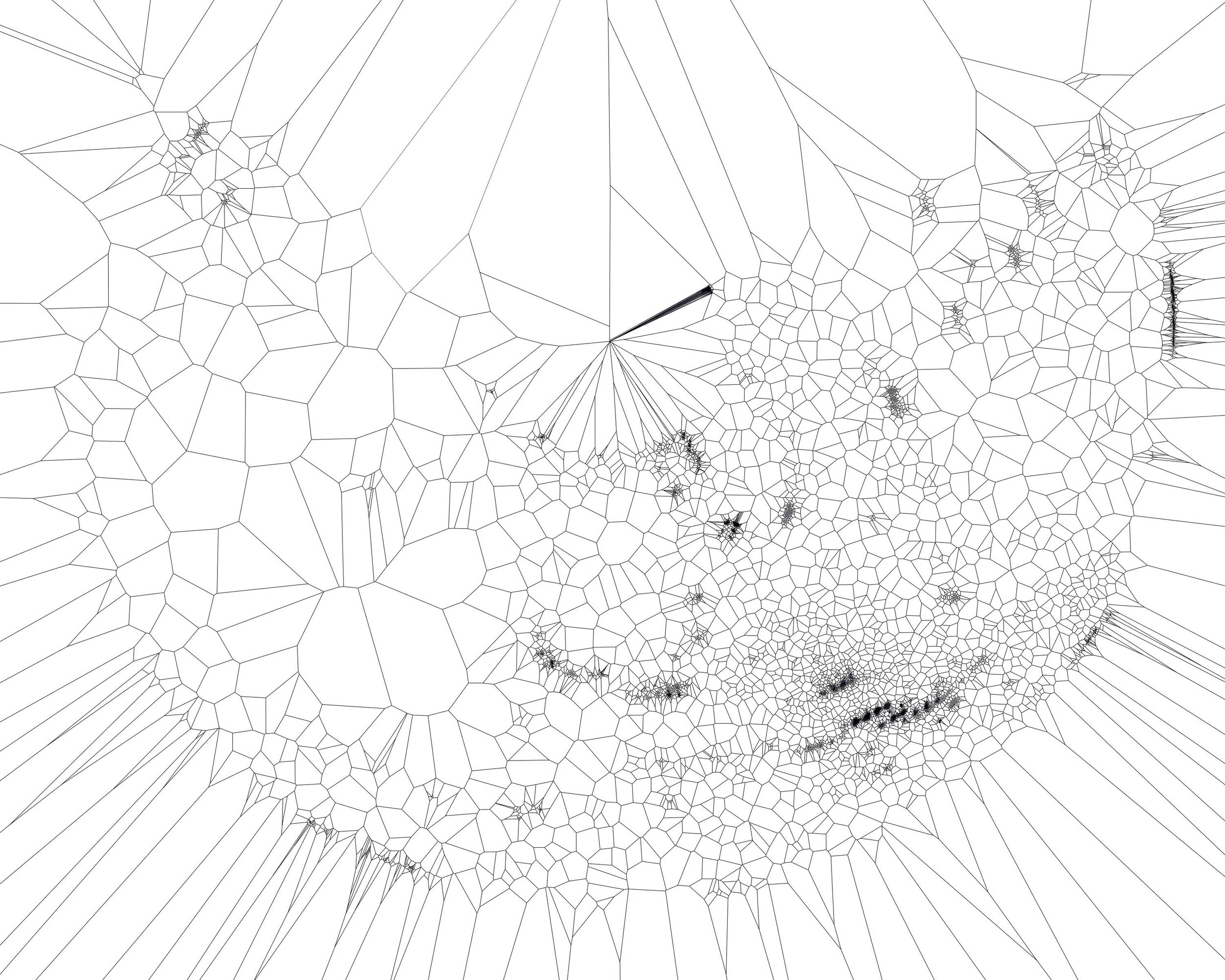


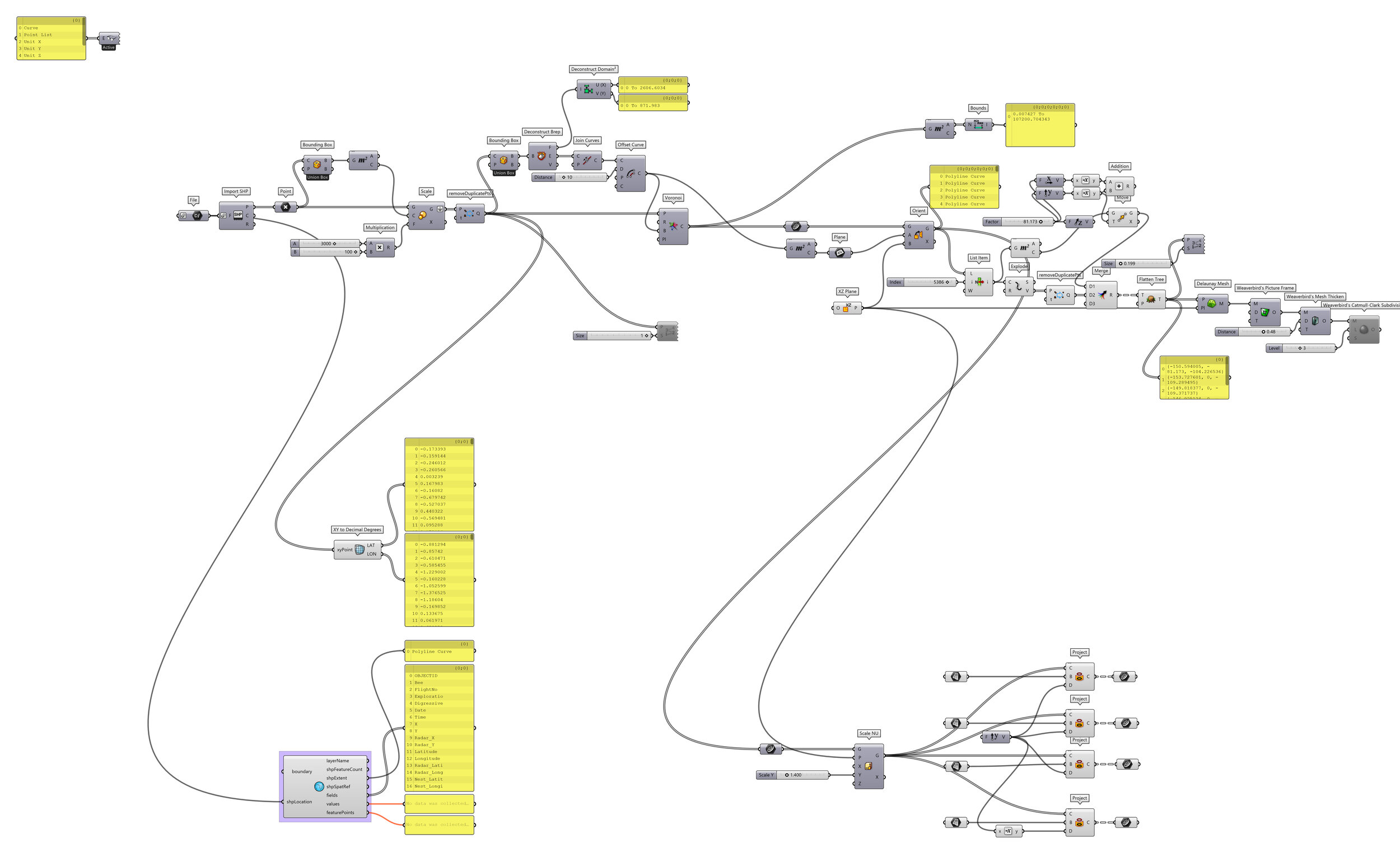
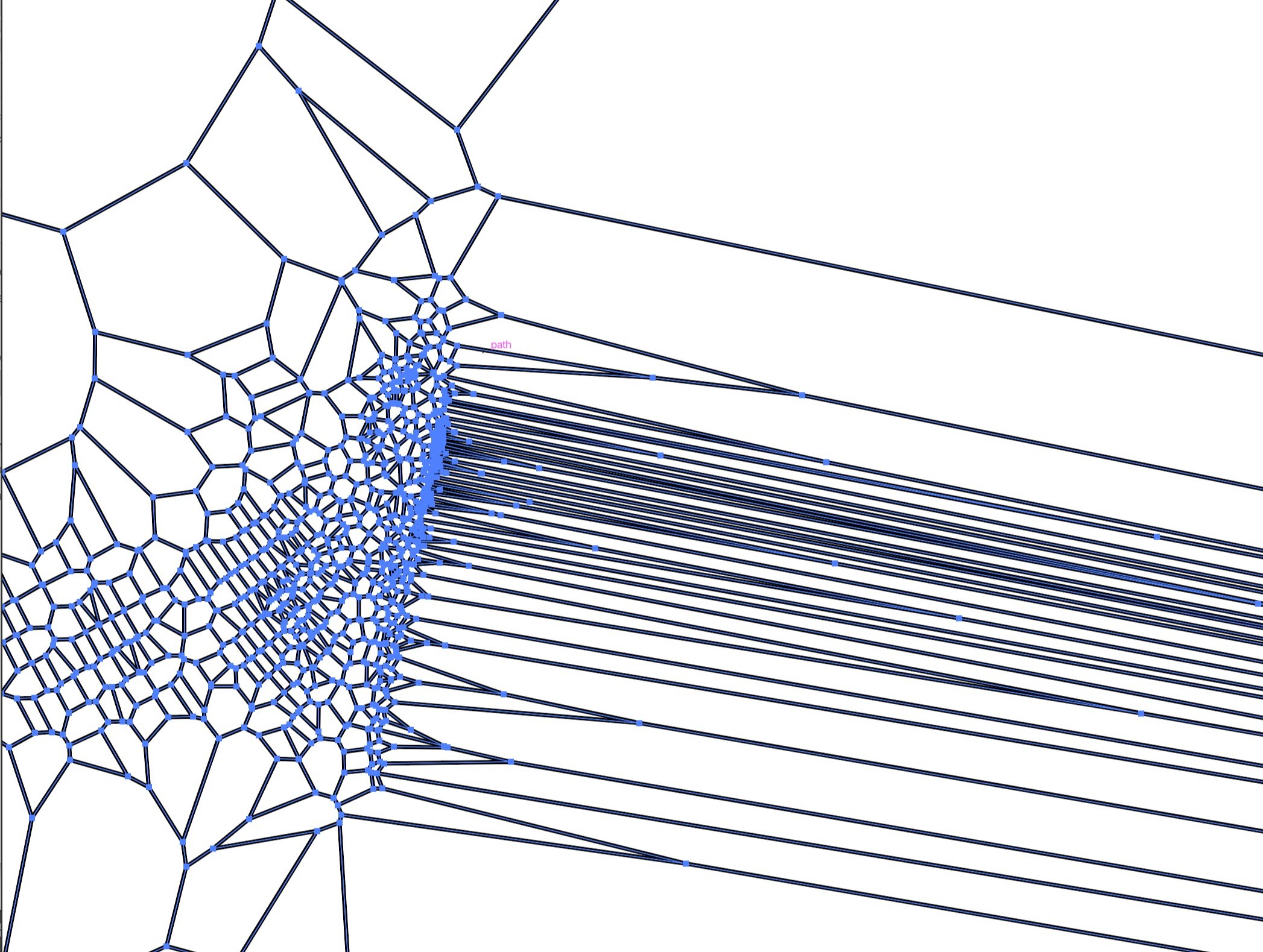

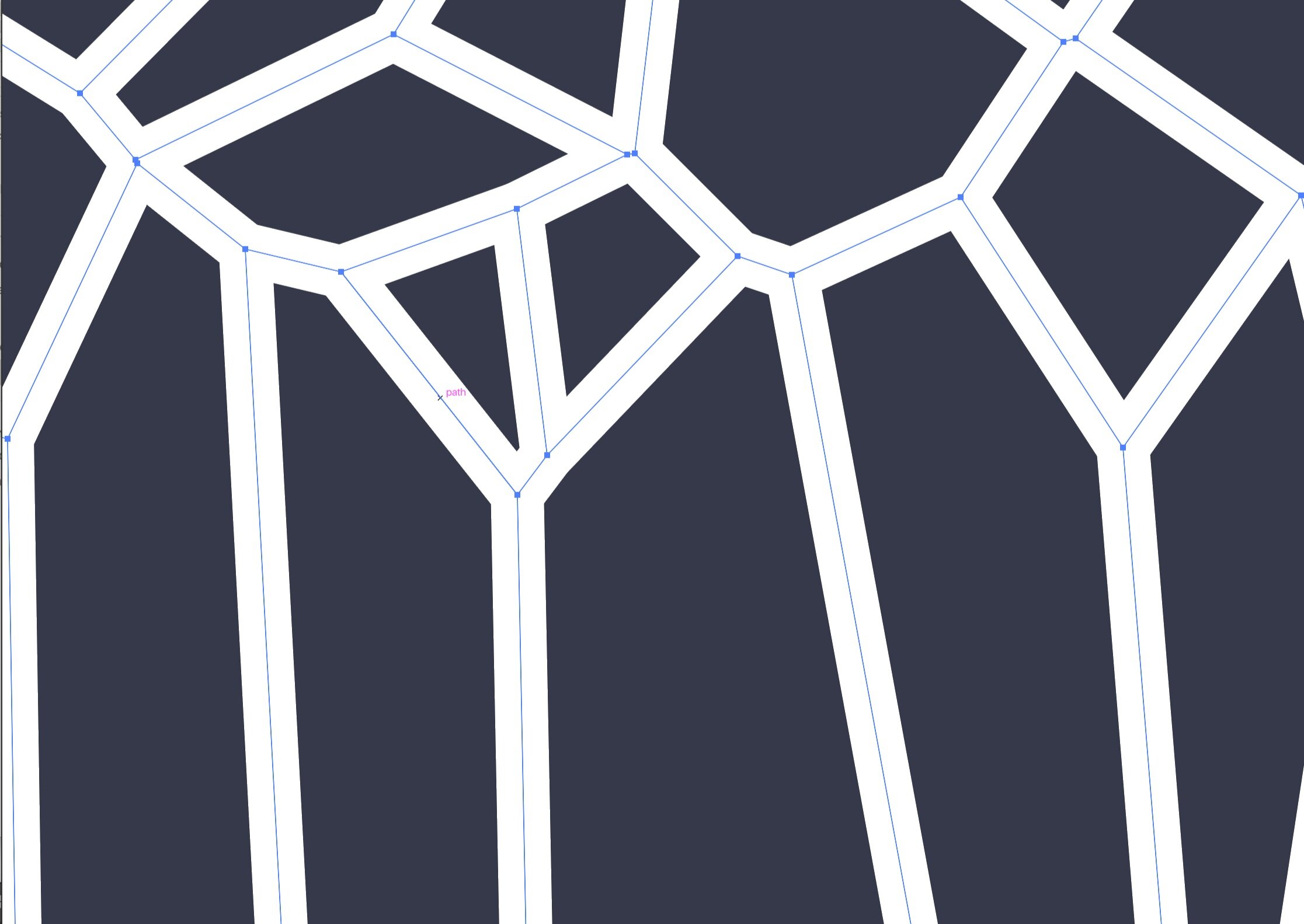



Installation view, Ecologies & Communities, (with Gabrielle L’Hirondelle Hill and Jagdeep Raina), The Community Gallery, April - November 2022, Toronto Canada

Each work in this series represents the territory of a single bee. The series is based on primary data collected by researchers at Queen Mary University in London, using a harmonic radar tracking device, on four individual bumblebees. Each flight in a bumble bees life was recorded with this device, and compiled into an excel file. Pairs of coordinates describe the beginning end of each flight. When studying spatial analysis and visualisation at Pratt, for the purpose of making art, I wrote to Lars Chittka about his research. He generously shared this dataset with me. I used it to make this series of archival pigment prints on canvas, which were exhibited by The Blue Building Gallery’s Soft Launch (Halifax: 2020).

The frequency of flights in the bee dataset creates dense and open areas in the image. Two dimensional voronoi tessellations are made with an open-source scientific programming language called R, and a package called deldir. Extending lines to the edge seems to draw the viewer closer to each image.

Cells in voronoi geometry are defined by seed points. This work uses the endpoint of each flight in a bees life as the seed point for tessellating geometry. Each cell is the end point of one flight in a bees life. These points were removed from the image. Thin white lines define the perimeter of every area visited by a single bee, to create the likeness of a world.

In an existing pedway in The Perimeter Institute for Theoretical Physics, where researchers pass from one side of the institute to the other, four canvases that comprise The Bee Series hung in a hallway, that itself hangs in space. It is hard to picture the world through the eyes of a bee. As a site specific installation, the work presents the spatial reality of a bees life that is, at once, intimate and immense.

Establishing the perimeter, or boundary, is essential for voronoi geometry. Every line relates to the edge, like a net or a web. To make these images I defined the image area of the painting before describing the equation. The Perimeter Institute is a private research institution in Waterloo Canada. I am greatful for the insight of Krista Blake, then director of Imagination and Culture, for situating The Bee Series in this unique environment.

R is an open source scientific programming language developed at Bell Laboratories to provide a wide variety of statistical, linear and nonlinear modelling, visualization and analysis through graphical techniques. R is a free and powerful program that works with libraries that are also in the public domain. Two geospatial libraries called rgdal and maptools were used to make these images. As with all developments in art and science, we are standing on the shoulders of giants.

The series was printed on canvas, with Supreme Digital in Bushwick Brooklyn, as archival inkjet pigment prints. The installation at The Perimeter Institute for Theoretical Physics in Waterloo Canada took place from June 2018 until December 2020. Images 1 & 2 from The Bee Series are in the collection of the Royal Bank of Canada; Images 3 & 4 are in the collection of Team Projects, in Toronto Canada. (studio view, 2017)

“Here we have” as D’Arcy Thompson, the Scottish naturalist and mathematician suggests, “a series of equal cylinders, compressed by symmetrical forces into regular hexagonal prisms” meaning honeycomb. Geometry for the sculpture Politics and Pollinators is based on the bees cell as well. Bees build honeycomb “like the seeds in a pomegranate,” as astronomer Johannes Kepler said. Voronoi geometry takes a page from this book, so to speak.

“The most famous of all hexagonal conformations and perhaps the most beautiful is that of the bee’s cell.” wites D’Arcy Wentworth Thompson in On Growth and Form (1917), “Just as it was obvious, then, that by mutual pressure from the six laterally adjacent cells, any one cell would be squeezed into a hexagonal prism, so is it also obvious that, by mutual pressure against the three terminal neighbours, the end of any one cell will be compressed into a solid trihedral angle whose edges will meet, as in the analogous case already described of a system of soap-bubbles...”

“The question is,” D’Arcy asks, “to what particular force are we to ascribe the plane surfaces and definite angles which define the sides of the cell in all these cases, and the ends of the cell in cases where one row meets and opposes another. We have seen that Bartholin suggested, and it is still commonly believed, that this result is due to simple physical pressure, each bee enlarging as much as it can the cell which it is a-building, and nudging its wall outwards till it fills every intervening gap and presses hard against the similar efforts of its neighbour in the cell next door.”

“If we observe the small scales of the skin of a fruit bat, we will see that they are hexagons because each scale growing at the same time is an obstacle, and tends to occupy as much space as possible in a given space: we see these same hexagons in the second stomach of ruminant animals, we find them in the seeds, in their capsules, in certain flowers.” On Growth and Form describes the geometry within all forms of life in this way. “Let a vessel be filled with peas, or rather with some other cylindrical seed, and close it exactly after having poured into it as much water as the intervals remaining between these seeds can accommodate; boil this water, all these cylinders will become hexagonal columns.”

D’Arcy says,“We can clearly see the reason, which is purely mechanical; each seed, whose shape is cylindrical, tends by its bulge to occupy as much space as possible in a given space, so they all necessarily become hexagons by reciprocal compression.” He goes on to say that, “each bee also seeks to occupy as much space as possible in a given space, so it is also necessary, since the body of bees is cylindrical, that their cells are hexagons - for the same reason of reciprocal obstacles.”

Applied to infrastructure of a proposed parking garage, the morning light might catch an image from The Bee Series, facing the skatepark and the fort. Lines scale across the proposed building and will be framed by the structure. Light can pass through a network of lines, making patterns on the concrete structure within.

The proposal is a visual one that describes an image, and a theme for a parkade. Images a static two dimensional work called The Bee Series are like allegorical charts which, like Mount Analogue by René Daumal can ‘only be perceived by the application of obscure knowledge’.

Facing west and south, afternoon light might catch The Bee Series as perforated cladding on a large scale. These drawings have an incredible amount of information. Right now if the smallest cell is 1 inch, the overall image scales to 150 feet (75 meters) wide. 46 x 24 metre surfaces will wrap the drawing around the proposed structure.

Images from The Bee Series will be ‘thown’ from a theoretical projection plane to the facade of a building. The project uses parametric tools to wrap a drawing around a building conceived of as a prefabricated parking garage, clad with a work of art.

Bees are wild. They are never domesticated, even if you keep them, which I do, in Sullivan County New York, with a group of artists who started Mad Bee Honey. Actual beekeeping aside, the point of departure for the project is a spatial analysis of four solitary bumble bees, collected with a harmonic radar tracking device by researchers at Queen Mary University in London.

Abstraction is an emotional force that pulls the public in. As mathematical objects, the original drawings are perfect for scaling across an architectural surface. Panels for cladding a 24 x 46 metre surface might look like the above. The drawing-building interaction will produce different qualities of light at various times of day.

Parametric tools control the drawing-building interaction. Grasshopper is a parametric plug-in for Rhino 6. There are many possible approaches which we are keen to explore. If a picture is worth a thousand words, models speak volumes. There will be both a digital model and a physical model.

A digital model can define the size of the largest and smallest cells in the pattern and visualize the project in situ. The project is perfectly suited for interdisciplinary collaboration and parametric tools.

Favorite places to park will be discovered,in time, at every level of the parkade. The project unfolds by defining the dimensions of the smallest and largest cell in the pattern; as a graphical surface. Lines scale across eight levels are framed by the proposed structure.

Geometric patterns create unique places for people in a temporary universe unto itself. “If I take a sheet of paper of given dimensions I will jot down a drawing which will have necessary relation to its format,” Mattise says, “and if I had to repeat it on a sheet of the same shape but ten times larger I would not limit myself to enlarging it: a drawing must have a power of expansion which will can bring to life the space that surrounds it.”

A related work, made with twenty 6’ painters ladders covered with reflective material, in collaboration Will Rogan, affects space in a similar way. Abstraction creates a kinetic volume in space. Laszlo Moholy-Nagy puts it this way; “Architecture proceeds from the inside to the outside of a building, so that the facade is never a thing separately conceived, but like the skin or carapace of a living creatire is the outer limit of a vital system, its protection against the world and at the same time its point of contact and interaction with the world.”
(photo: S. Martin)

The graphical division of space is stationary. People move through it, as cladding for a precast building that can entered. For Laszlo Moholy-Nagy, “Since in architecture not sculptural patterns but spatial positions are the building elements, the inside of the building must be interconnected and connected with the outside by its spatial divisions.” The sculpture was part of an exhibition at Yerba Buena Center for The Arts in San Francisco, Ten by Twenty, in the spring of 2003.
(photo: S. Martin)